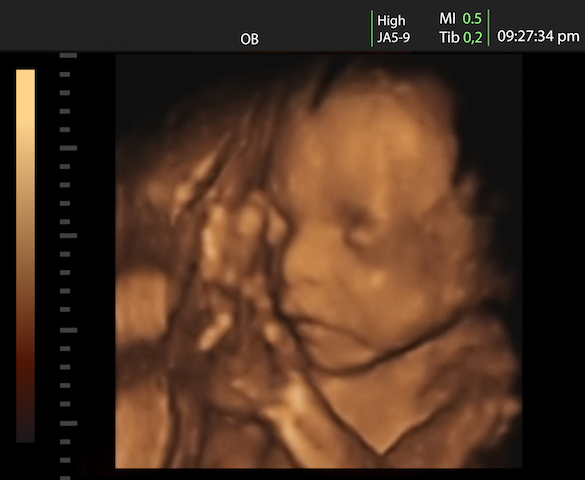By Catherine Daub
We recently had the awesome opportunity to communicate with teens across the country and hear about their pro-life beliefs. Surprisingly, many of them—although 100% pro-life in their hearts—had no idea how to properly communicate this message. We heard things like “human life begins in the womb” or “life should be protected from the moment a baby is conceived in the womb.” But human life begins, and conception occurs, 8-10 days prior to implantation in the womb. And in some instances—including IVF—conception occurs outside of the woman’s body completely. All of those babies deserve protection, and we cannot protect human life if we do not know how to articulate when it begins. With T-shirts and stickers and memes making their way around with cute but untrue slogans like “Human dignity begins in the womb” and “Women’s rights begin in the womb,” it is not surprising that students are confused about the biology.
We also heard from teens that “babies in the womb are human because they have a heartbeat” or because they “can feel pain.” While both of these things are true, they are not what make the preborn baby human. In fact, a baby is human before either one of these milestones takes place. Again, it is possible that the focus on things like heartbeat bills and fetal pain bills has confused our young people as to when human life should be protected. Whatever the case may be, we must clear up this confusion.
As Aristotle said,
“A small error in the beginning leads to a multitude of errors in the end.”
So, by confusing young people now, we are ensuring that when they are adults they will neither be prepared nor equipped to work toward making abortion unthinkable, let alone illegal.
It is imperative that we raise a generation of pro-life students who not only believe in the sanctity of life, but who have the ability to articulate those beliefs in a way that is scientifically accurate, compassionate, and bold.
Our lesson for 7th grade and up entitled Defend Life: The Beauty of the Developing Human Being addresses the moment of a human being’s creation (whether sexuallyreproduced (fertilization) or a-sexually reproduced (without immediate fertilization, e.g., cloning, genetic engineering, etc.) in a way that is easy to understand and does not violate the innocence of students who may not understand the human sexuality aspect of conception just yet.
We worked with Dr. Dianne Irving, a former biochemist and biologist at the National Institutes of Health, to ensure that we used language throughout the lesson that keeps the focus on the humanity of the preborn baby from the moment God created him and ensures that we are using terms that allow for the protection of the smallest human beings from the exact moment they are created by God, regardless of where that process takes place. Understanding that today’s young people are tomorrow’s pro-life leaders, politicians, legislators, parents, and teachers, we do not take our job lightly. Please consider using this lesson with your students or even just reading it yourself so that you can explain the dignity of the preborn child to your students in a way that will set them up for success in the future.
As parents and teachers, we cannot rely on Internet searches to guide our students in their research about pro-life truth. We must know the facts. And we must pass them on to this next generation.
Together we will build a culture of life. But it must begin with accurate information. And it must be taught, as all important things, over and over again until our students really understand it.
To help you bring this truth to your students, we are offering Defend Life at 30% off the retail price until Monday, January 27! There has never been a better time to teach your children to defend life!

